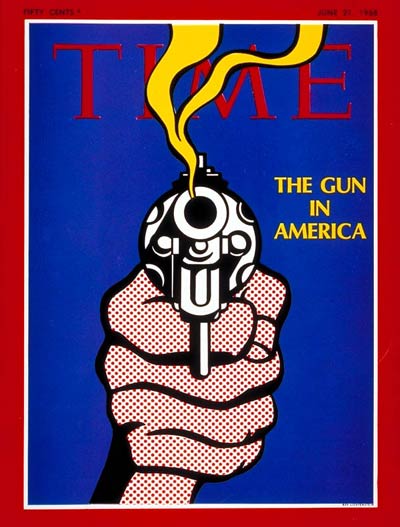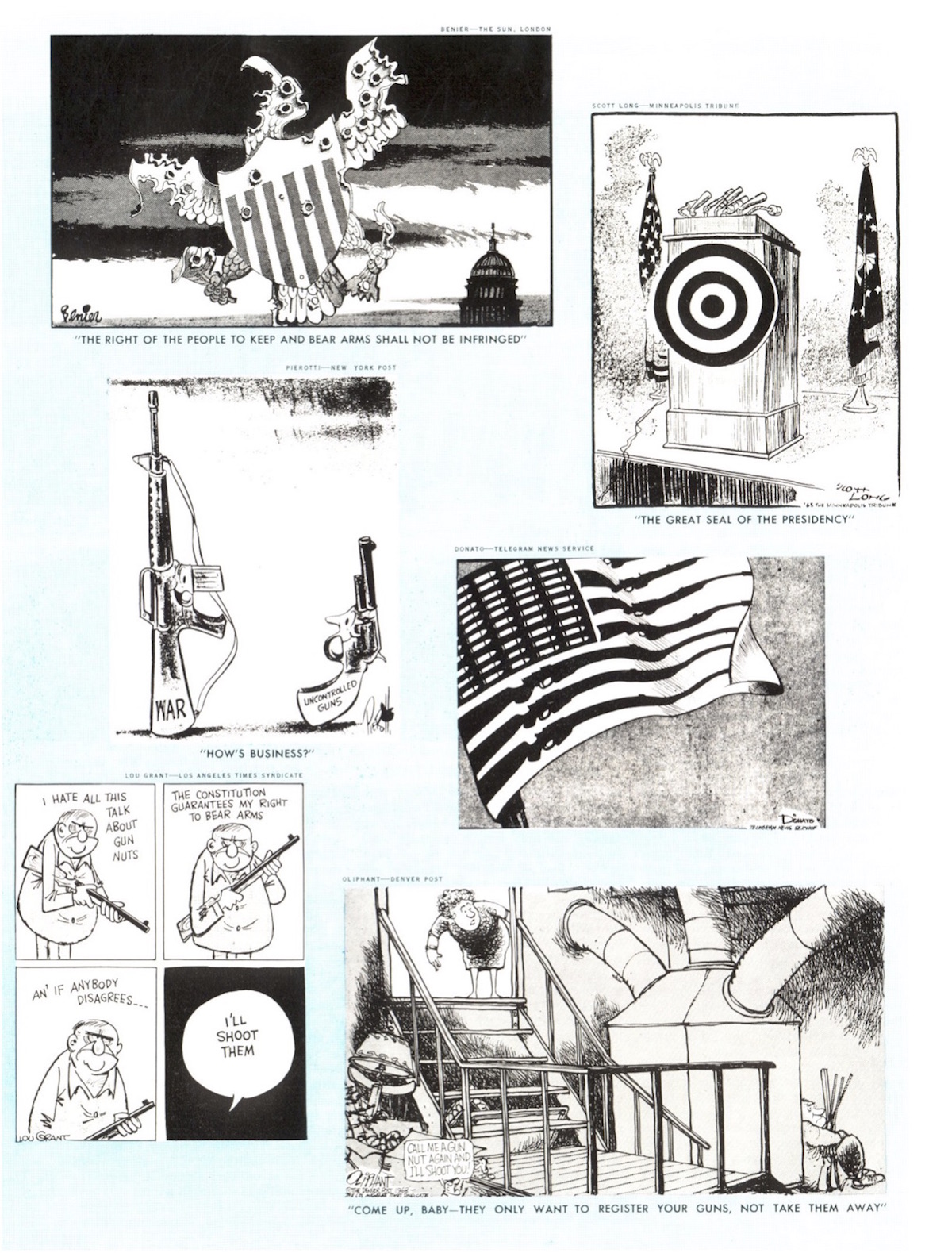
The impetus for the article was tragic, and unique to its time: the killing of Robert F. Kennedy, on June 6, 1968. But the opening paragraph, presented about two weeks after the assassination under a striking cover by artist Roy Lichtenstein, could have been written today.
“Forget the democratic processes, the judicial system and the talent for organization that have long been the distinctive marks of the U.S. Forget, too, the affluence (vast, if still not general enough) and the fundamental respect for law by most Americans. Remember, instead, the Gun,” the story began. “That is how much of the world beyond its borders feels about the U.S. today. All too widely, the country is regarded as a blood-drenched, continent-wide shooting range where toddlers blast off with real rifles, housewives pack pearl-handled revolvers, and political assassins stalk their victims at will.”
In fact, that same sentiment was expressed in the last 24 hours: as many observers have pointed out, the BBC’s report on the mass shooting in San Bernardino, which left at least 14 dead, described Wednesday as, “Just another day in the United States of America — another day of gunfire, panic and fear.”
The similarities between eras don’t stop there. While one of today’s more popular proposals for reducing gun violence is the “smart gun” that is specially linked to its owner, the solutions of a half-century ago involved closely linking bullets to each gun. “Some authorities have suggested that every firearm sold be ‘fingerprinted’ in advance by test-firing to determine its ballistic pattern,” the 1968 article noted. “In the age of the computer, such distinctive patterns could be kept on file without too much difficulty.” Likewise, as many people have reacted to the San Bernardino events with calls for gun control and questions about why gun violence is such a problem in the U.S., many commentators 50 years ago responded to the RFK assassination with similar questions. As part of the 1968 cover story, TIME ran a page of political cartoons from around the globe expressing just that thought (roll over to zoom in):
 A page from the June 21, 1968, issue of TIME
A page from the June 21, 1968, issue of TIME
And finally, the feeling of inevitability and pessimism that accompanies some of today’s conversations about mass shootings is nothing new either. “Sir: If we think we‘re a violent nation now,” wrote reader Mrs. Norman L. Jacobson in response to the 1968 story, “just wait until our young children grow up.”
Read the full story, here in the TIME Vault: The Gun Under Fire
More Must-Reads from TIME
- Donald Trump Is TIME's 2024 Person of the Year
- Why We Chose Trump as Person of the Year
- Is Intermittent Fasting Good or Bad for You?
- The 100 Must-Read Books of 2024
- The 20 Best Christmas TV Episodes
- Column: If Optimism Feels Ridiculous Now, Try Hope
- The Future of Climate Action Is Trade Policy
- Merle Bombardieri Is Helping People Make the Baby Decision
Write to Lily Rothman at lily.rothman@time.com